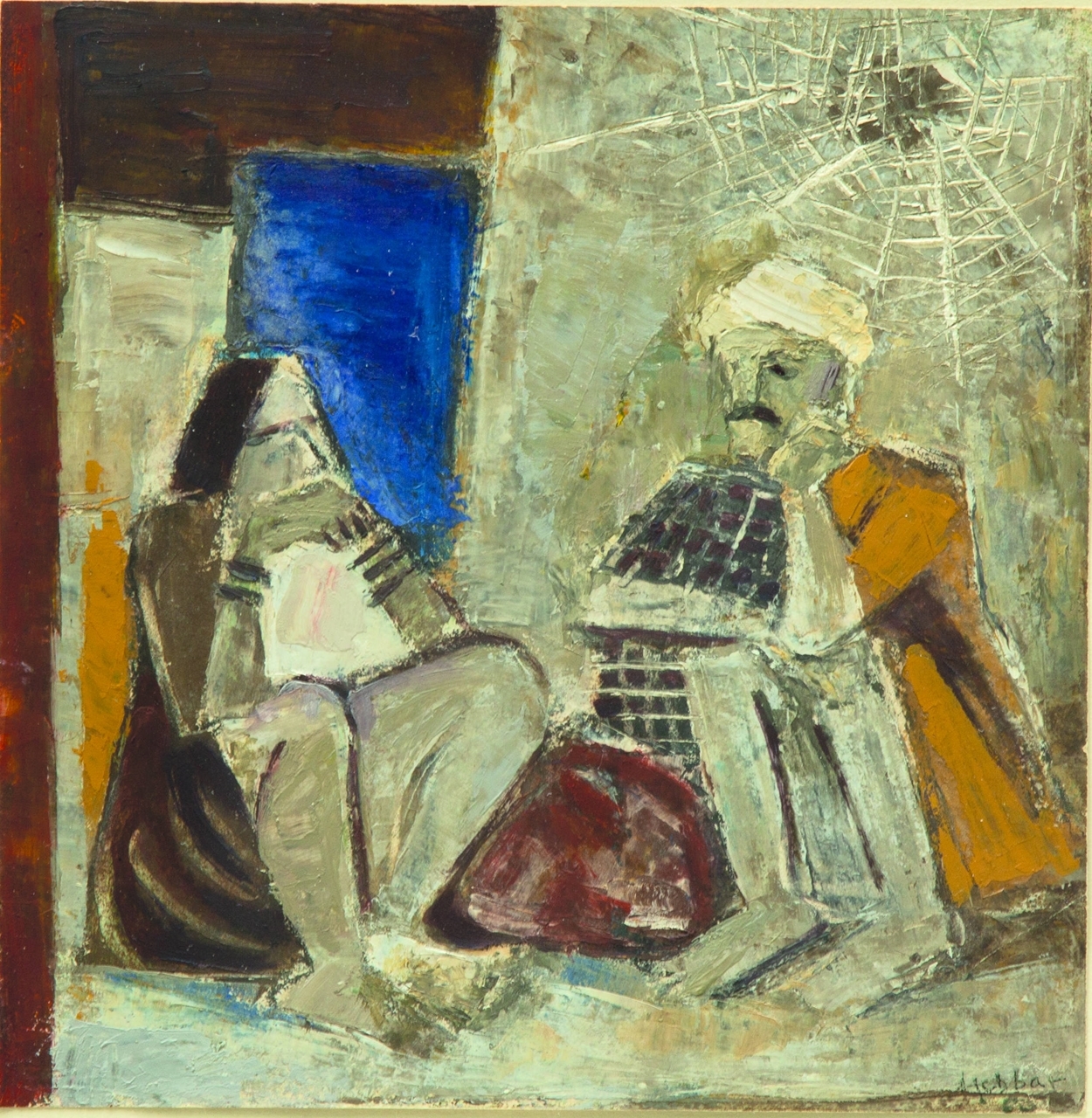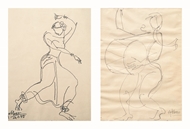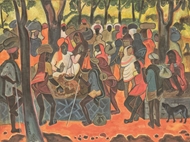![]() Traditional, Modern & Contemporary Indian Art
Traditional, Modern & Contemporary Indian Art
![]() Traditional, Modern & Contemporary Indian Art
K K HEBBAR (1911 - 1996)
Traditional, Modern & Contemporary Indian Art
K K HEBBAR (1911 - 1996)
RELATED LOTS
-
Provenance
 Provenance
Provenance
Property from the K K Hebbar Art Foundation
-
Literature
 Literature
Literature

K K Hebbar did not believe in Marxian Socialism as it denied the artist the right to free expression. But he adhered to Gandhian Socialism, which he felt was the right path to take after Independence. It was during those struggling and tumultuous years that Hebbar and his family had to retreat to Mahabaleshwar (the picturesque hill station in Western Ghats) in 1952 for a year. His friend Shamrao Velkar offered his bungalow to stay, till Hebbar could return to Mumbai and rent a small fl at. This offered him time for introspection.
Coming from a small village in south-Karnataka he felt a close kinship with the villagers. He mingled with them freely and often visited their homes for a meal. His creative effort was directed towards rustic villagers, their simple life and the hills and dales of Mahabaleshwar. Back in his work place, he painted small charming works on paper with water and poster colours and sometimesin oil. His intense nature made him seek his own style. His lines became more powerful. His paintings of those days assumed a life full of feeling.
The main occupation of farmers in Mahableshwar was strawberry cultivation and honey beekeeping. They borrowed money from local pawn brokers and were often in debt. Dondiba, one such farmer, dreamt big, borrowed heavily and spent a lifetime paying back the loan with exorbitant interest. Hebbar was moved by their plight. He used to help farmers by giving them some money from his own meagre earnings.
In this work, the brooding farmer and his wife seem downcast. But they are strong and robust ready to face any challenge. Hebbar admired this resilience and expressed it with powerful lines. In the evenings, farmers used to meet and chat in the fields. They wore hooded cane gear to shield themselves from rain and carried rough woollen blankets to keep out the evening chill. He portrayed the rustic farmers with dramatic human elements. Colour was introduced and integrated to form a creative force.
- Text by Rekha Rao



